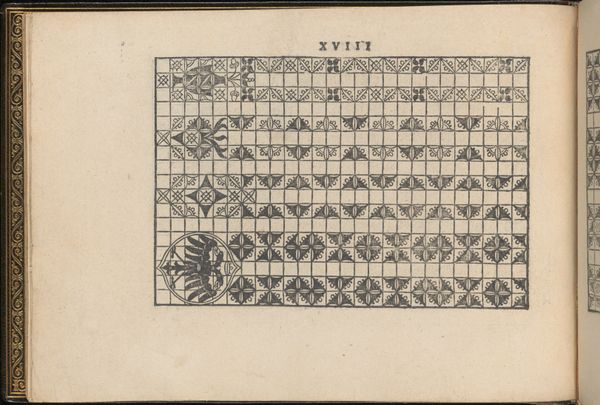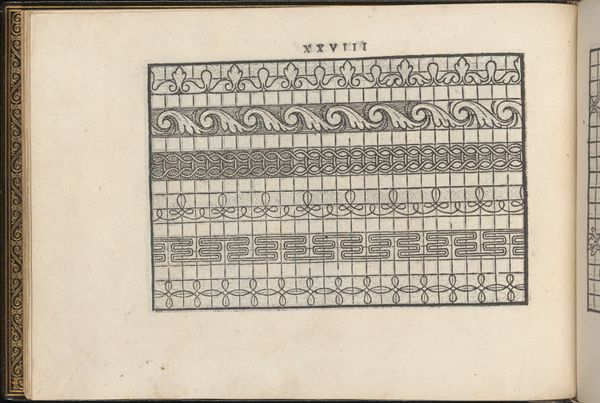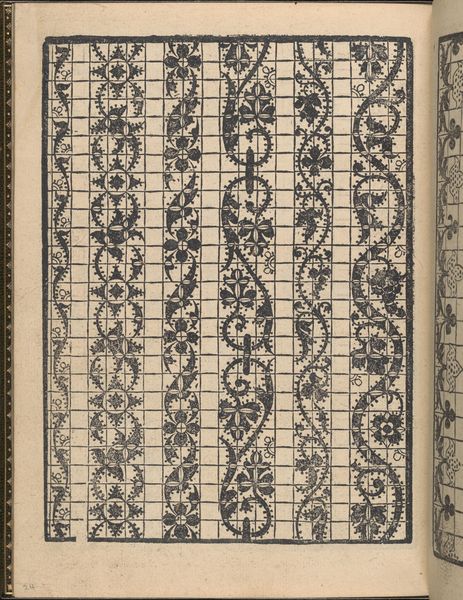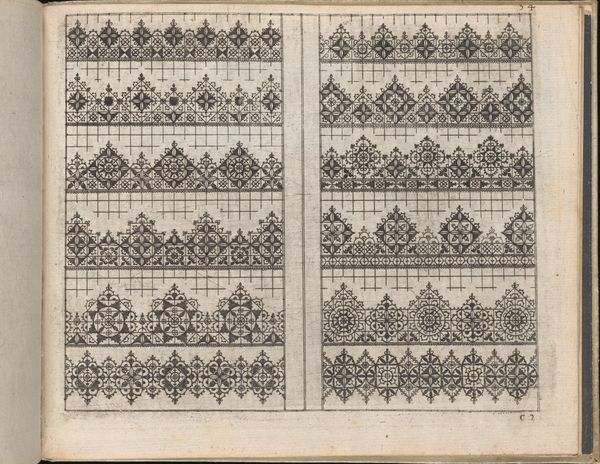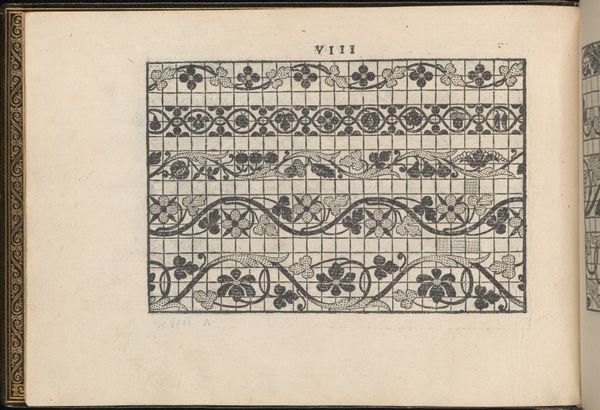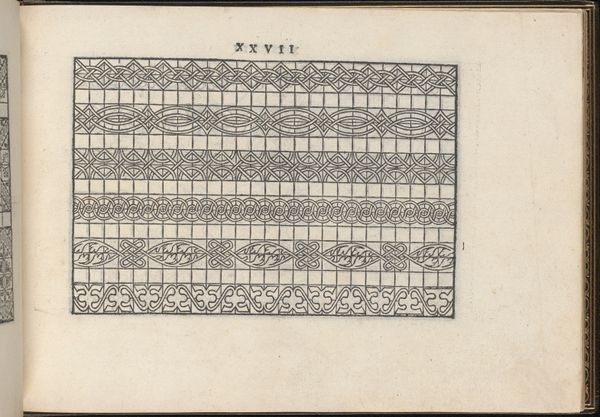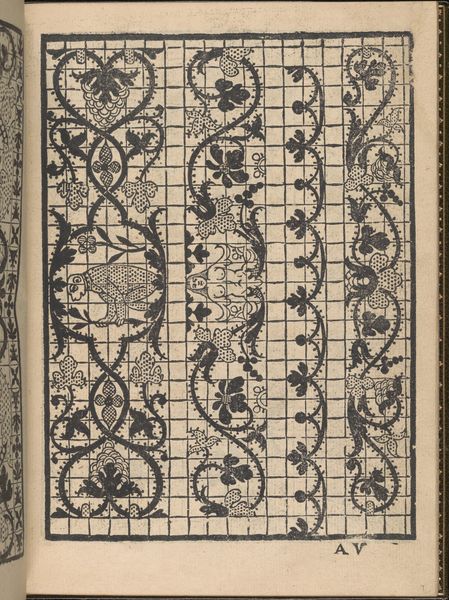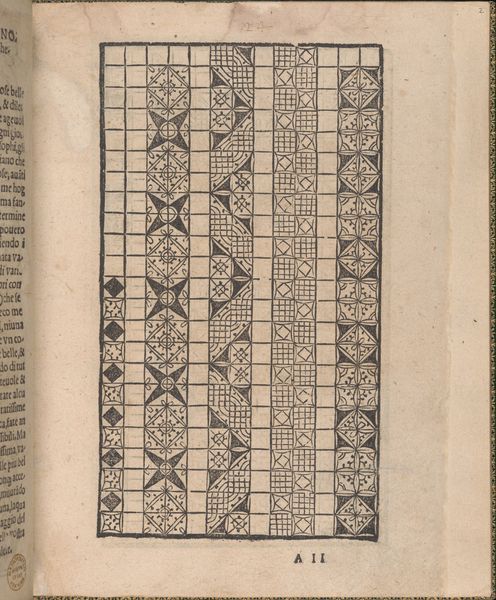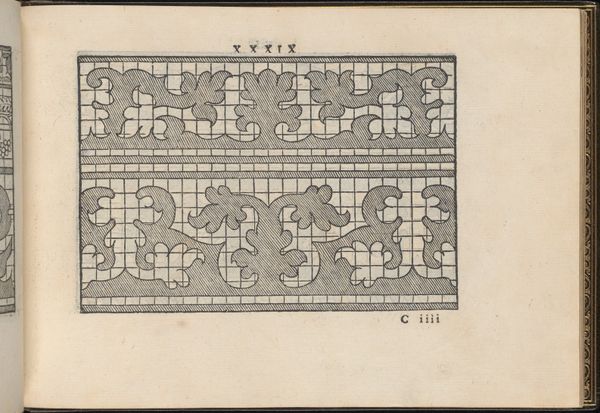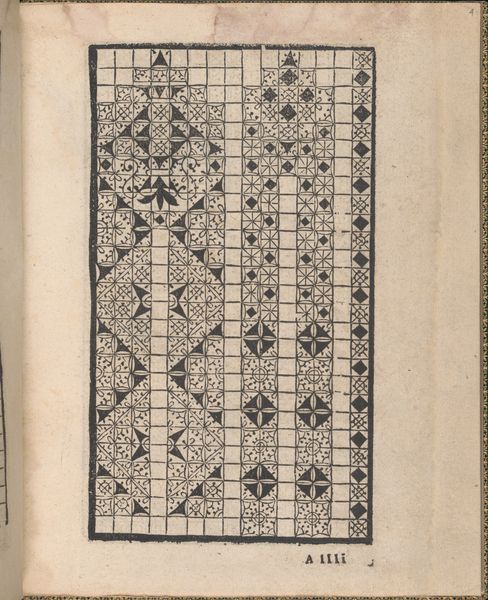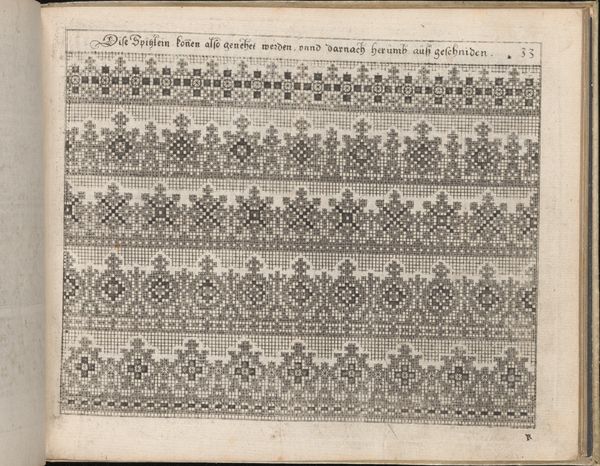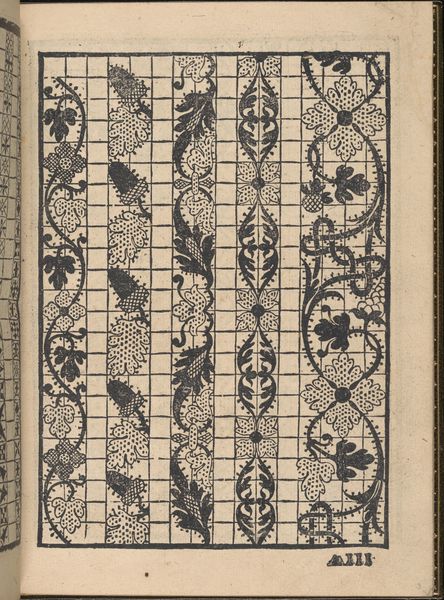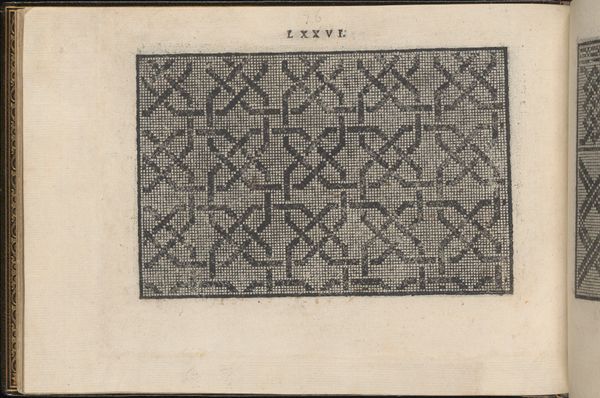
La vera perfettione del disegno di varie sorti di recami, page 4 (recto) 1557
0:00
0:00
drawing, graphic-art, print, etching, engraving
#
drawing
#
graphic-art
# print
#
etching
#
11_renaissance
#
geometric
#
italian-renaissance
#
engraving
Dimensions: Overall: 5 11/16 x 7 1/2 in. (14.5 x 19 cm)
Copyright: Public Domain
Curator: This page, titled "La vera perfettione del disegno di varie sorti di recami, page 4 (recto)," dates back to 1557 and comes to us from the hand of Giovanni Ostaus. Created using engraving and etching techniques, it’s part of the Metropolitan Museum’s collection. Editor: At first glance, I'm struck by the sense of meticulous order. It's almost like a blueprint, the crisp lines and repetitive patterns evoking a feeling of precision and control. Curator: That's a wonderful observation. This wasn’t simply a drawing; it was intended as a pattern book for embroidery, revealing the period’s fascination with ornamentation and the dissemination of design. Consider how crucial these prints were for standardizing aesthetics and skills across workshops. Editor: So, each of those bands would have been a specific stitch or pattern for artisans to follow? How fascinating! And it’s a window into the domestic sphere and the skills that women, in particular, would have cultivated. It feels quite removed from the grand narratives we often associate with the Renaissance. Curator: Exactly. These pattern books highlight the democratization of art in a way. Before mass production, accessing decorative motifs was limited. Suddenly, intricate designs become accessible, empowering skilled artisans to create complex embroidered works. The geometry is more than just aesthetic; it carries coded instructions, almost a visual language of craft. Editor: It also makes me think about the economics of creativity. By making these patterns readily available, were these books empowering artisans, or were they potentially commodifying their skills and ultimately controlling the market by setting standards? It brings up interesting questions about labor and the value of artistic knowledge in that period. Curator: Those are potent questions, reflecting the complexities inherent in the distribution of knowledge during the Renaissance. What appears orderly on the surface hints at deeper cultural shifts. These weren’t passive images but active tools that altered the very fabric of artistic production and consumption. Editor: Looking at it now, I see not just the order, but also the potential for subversion. Imagine the artisan who takes these patterns and bends them, merges them, or pushes against their limitations to forge a unique style. Thanks to this piece, I’m contemplating the role of instruction versus creativity and standard against originality, even now.
Comments
No comments
Be the first to comment and join the conversation on the ultimate creative platform.
